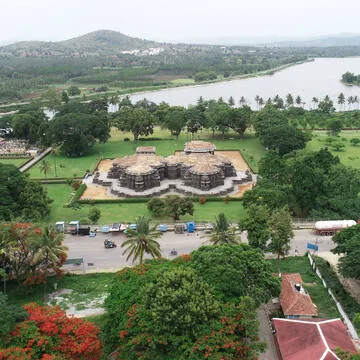Hoysala Temples- 42nd UNESCO World Heritage Site
The sacred ensembles of Hoysala temples of Belur, Halebid, and Somnathapur in Karnataka became 42nd UNESCO World Heritage Site in India.
Examples of Hoysala temples:
1. Channakeshava temples at Belur:
It was built by Hoysala king Vishnuvardhana to commemorate his victory over cholas in 1116 AD.
. It is a star shaped temple , dedicate to lord Vishnu.
. Belur is situated on banks of Yagachi river and was one of capitals of Hoysala Empire.
2. Hoysaleshvara temples at Halebidu:
The twin shrined temple is perhaps the largest Shiva temple built by Hoysalas.
. The sculptures depict various aspects of Shiva as well as scenes from the Ramayana, the Mahabharata and the Bhagavata Purana.
3. Keshava temple at Somnathapur:
It is a beautiful Trikuta temple dedicated to Lord Krishna in three forms - Janardhana, Keshava, and Venugopala.
. The main Keshava idol is missing and the Janardhana and Venugopala idols are damaged.
Hoysalas combined Nagara and Dravida style and developed new Hoysala style.
Hoysala architecture is known for its distinctive blend of Bhumija style prevalent in central India, the Nagara traditions of northern and western India, and the Karnataka Dravida modes favoured by Kalyani Chalukyas.
These Hoysala temples present beautiful architectural and natural landscape in Karnataka. These temples built in 12th and 13th century AD in Karnataka. Devotees and tourist visit them in large numbers every year and pray for there meaningful life ahead.






Comments
Post a Comment